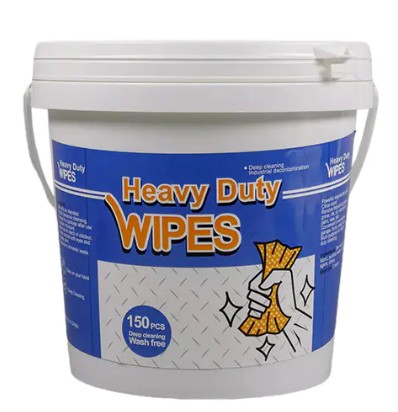Disinfecting wipes play a crucial role in reducing the spread of illnesses and infections by effectively eliminating germs, bacteria, and viruses from surfaces commonly touched by multiple individuals. In today's world, where contagious diseases such as the flu, common cold, and COVID-19 can easily spread through contact with contaminated surfaces, disinfecting wipes offer a convenient and practical solution to help maintain cleanliness and hygiene in various environments.
One of the key benefits of disinfecting wipes is their ability to kill a wide range of germs and pathogens on surfaces. These wipes are impregnated with disinfectant solutions containing active ingredients such as alcohol, bleach, or quaternary ammonium compounds, which are effective at destroying harmful microorganisms. By simply wiping down commonly touched surfaces such as doorknobs, light switches, countertops, and electronic devices, disinfecting wipes can help prevent the transmission of illnesses from person to person.
Moreover, disinfecting wipes offer convenience and ease of use, making them suitable for use in various settings, including homes, offices, schools, healthcare facilities, and public spaces. Unlike traditional cleaning methods that require the use of multiple products and tools, disinfecting wipes provide a quick and efficient way to sanitize surfaces without the need for water, soap, or additional equipment. This convenience encourages regular use and promotes adherence to good hygiene practices, ultimately reducing the risk of illness transmission in high-traffic areas.
Another advantage of disinfecting wipes is their ability to target specific areas and surfaces prone to contamination. Unlike sprays or liquids, which may be less precise and more difficult to control, wipes allow users to directly apply disinfectant to targeted surfaces, ensuring thorough coverage and maximum effectiveness. This targeted approach is particularly beneficial for disinfecting small or intricate items such as keyboards, phones, remote controls, and bathroom fixtures, where germs can easily accumulate and spread.
Furthermore, disinfecting wipes offer a practical solution for on-the-go sanitation, allowing individuals to quickly clean their hands and surfaces when soap and water are not readily available. Whether traveling, shopping, or dining out, disinfecting wipes provide a convenient way to maintain cleanliness and protect against germs in public settings. By carrying a pack of wipes in their bag or pocket, individuals can reduce their exposure to harmful pathogens and minimize the risk of contracting infectious diseases while on the move.
Additionally, disinfecting wipes are suitable for use on a wide variety of surfaces, including non-porous materials such as metal, glass, plastic, and laminate. This versatility allows for comprehensive disinfection of common touchpoints in both residential and commercial settings, helping to create a safer and healthier environment for occupants. Whether used in kitchens, bathrooms, classrooms, or healthcare facilities, disinfecting wipes can help prevent the spread of illnesses and infections by effectively killing germs on surfaces where they are most likely to be transmitted.
In conclusion, disinfecting wipes play a vital role in reducing the spread of illnesses and infections by effectively eliminating germs from commonly touched surfaces. With their ability to kill a wide range of pathogens, convenience of use, targeted application, on-the-go sanitation capabilities, and versatility in surface compatibility, disinfecting wipes offer a practical solution for maintaining cleanliness and hygiene in various environments. By incorporating disinfecting wipes into regular cleaning routines and adhering to good hygiene practices, individuals can help protect themselves and others from contagious diseases and contribute to overall public health and safety.